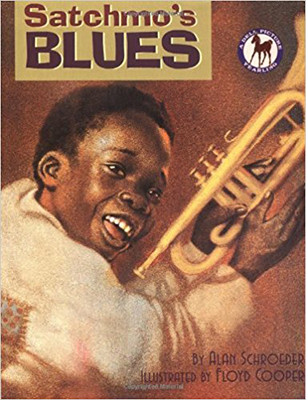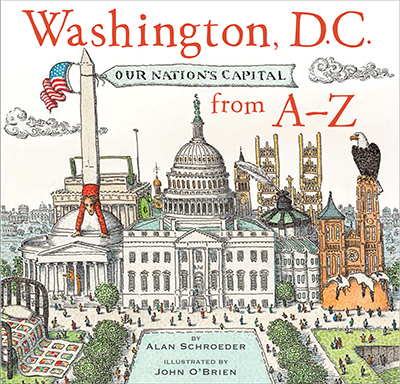Finding the Draw in Your Children’s Picture Book Story

Few people find inspiration when they receive a rejection letter. But for instructor Alan Schroeder—a writer who began pursuing the genre of children’s picture books on a whim—rejection letter after rejection letter motivated him to strengthen his writing and not give up.
“One day, for fun, I decided to write a fairy tale, just to see if I could do it; the stories of Hans Christian Andersen were a big part of my childhood,” Schroeder recalls. “It turned out well, and I sent it to Houghton Mifflin, a publishing company I admired. They turned the story down—for one thing, it was much too long—but the rejection letter, instead of deflating me, simply made me want to try harder. So I wrote a second story, then a third. The rejection letters kept coming, but they were full of encouragement. Finally, after several years of trying, I managed to sell my sixth book, a picture book about the childhood of entertainer Josephine Baker, to the publisher Little, Brown.”
"I've always been drawn to stories about real people, especially the childhoods of well-known people."

Schroeder has since written—and published—more children’s picture books, including Satchmo's Blues (Dragonfly, 1999), Smoky Mountain Rose (Puffin, 2000) and Minty: A Story of Young Harriet Tubman (Puffin, 2000). His books have received numerous honors, including the ALA Notable, the Christopher Award, the Kentucky Bluegrass Award and the Coretta Scott King Award.
The Christopher Award is just one example of how Schroeder is making his mark on the literary world and opening children’s eyes to stories they might not otherwise hear. This particular award is given to those who “encourage audiences to see the better side of human nature.” Many of Schroeder’s books tell the childhood tales of those who later become the historical figures we normally read about.
“I've always been drawn to stories about real people,” says Schroeder. “I'm not sure why that is. But I enjoy writing about real people—especially the childhoods of well-known people—and I've had a lot of success in that genre.
“Even though I'm white, I'm especially drawn to African-American stories,” continues Schroeder. “I've written half a dozen books about black Americans—famous people like Louis Armstrong and Harriet Tubman, and lesser-known figures like Augusta Savage, a sculptor during the Harlem Renaissance.”
But not every biography idea resounds with Schroeder. He emphasizes that it is not just about writing a story, it is about connecting with the intended audience, which is a lot easier if the people he writes about mean something to him. Schroeder says that in general he gets to choose his subject, but he admits that a publisher occasionally might suggest something that results in a book he loves.
"A good relationship with your editor is critical to survival in this business."
“A few years ago, a publisher suggested a book about Washington, D.C.,” Schroeder recalls. “The idea didn't excite me at first, but the more I read about Washington, the more I became convinced that it was a good idea. So I wrote an ABC book (a format that's popular with kids and teachers) about the capital. The artwork just came in two weeks ago, and I'm now going over the text a final time to make sure everything's right. The book is scheduled to come out in March 2018.”

The illustrations are obviously also an important part of a successful children’s picture book. However, Schroeder says that it is not up to the author to find that perfect match. “The author can make suggestions, but that's all they are—suggestions,” Schroeder warns those who have an artist in mind for their work. “Quite often, if a particular book has been successful, the publisher will pair up the author and illustrator again. John O'Brien, a cartoonist who lives in New Jersey, illustrated the Washington, D.C., ABC book; it's our third book together. Even though we've never met, we seem to be on the same wavelength. The author has to trust the editor: A good relationship with your editor is critical to survival in this business.”
Part of that trust is understanding that there is such a thing as an ideal length for a children’s picture book. So what is the magic number that will match the literacy rate and capture the attention spans of today’s youth?
“Thirty-two pages,” shares Schroeder. “That's one of the first things I share with my students. Thirty-two pages is an industry standard, and even though I've done longer books, most picture book editors want authors to stick to the 32-page format. They're cheaper to produce and easier to market. Laying out a story over 32 pages is a big part of my children’s picture book writing workshop. If a writer can successfully arrange a story so that it falls gracefully over 32 pages, he or she will avoid a lot of editorial headaches later.”
When writing a children’s picture book, the author needs to have a mindset that is different from one for writing an adult story or novel. Schroeder advises:
- Remember your childhood: What were the things that had interested, confused or frightened you?
- Understand that illustrators can save you long, descriptive (and sometimes not necessary to plot) sentences by translating through their artwork.
- Keep in your head that children will be physically reading the book and that page turns are critical for this audience.
You can get more tips on writing children’s books from Alan Schroeder in Berkeley this summer.
